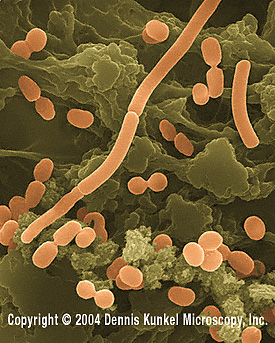Acinetobacter
Classification
|
Higher order taxa:
Bacteria; Proteobacteria; Gammaproteobacteria; Pseudomonadales; Moraxellaceae
Species:
Acinetobacter baumannii
Acinetobacter baylyi
Acinetobacter bouvetii
Acinetobacter calcoaceticus
Description and Significance
Acinetobacter is a genus of opportunistic pathogens in the proteobacteria group, species of which are distributed in widespread, diverse habitats. It has garnered media attention because of an outbreak among soldiers in Iraq who contracted the species Acinetobacter baumannii from the Iraqi soil. At least 280 people, mostly soldiers returning from the battlefield, were infected with the disease, and at least 5 (non-active-duty soldiers) died.
These bacteria can often be found as the cause of pneumonia in hospitalized patients, especially those dependent on ventilators in Intensive Care Units. The bacteria are most often contracted through the exposure of open wounds to contaminated soil. This makes it a problem during warfare (it was the second-leading cause of infection among troops during the Vietnam conflict) because of the high number of injuries caused by explosives, which can easily lead to dirtying exposed skin. In healthy humans, it is normal to have some amount of Acinetobacter on the skin surface; as many as 25% of healthy adults do in fact harbor these bacteria.
Genome Structure
While there is much information available on the types of infections Acinetobacter causes, relatively few studies have been performed on the bacteria's genetics. Because Acinetobacters are very resistant to antibiotics and are difficult to differentiate between species when isolated from patients, learning more about their DNA will help develop better drugs to control outbreaks of the infection.

